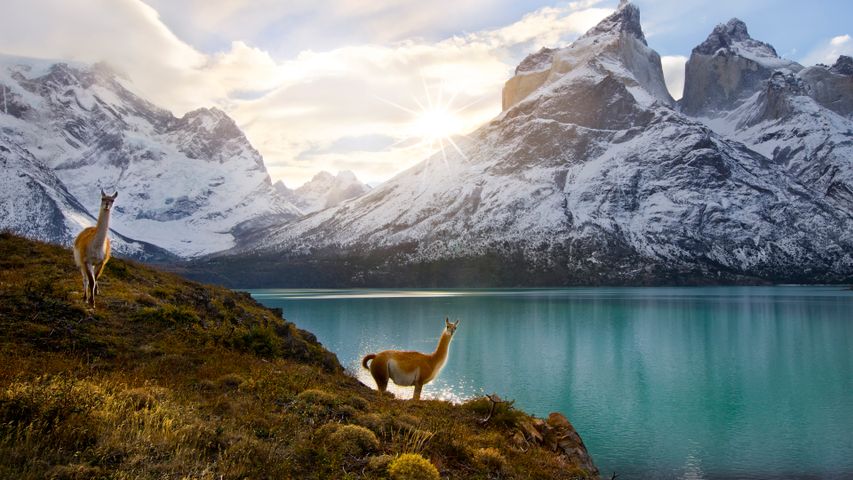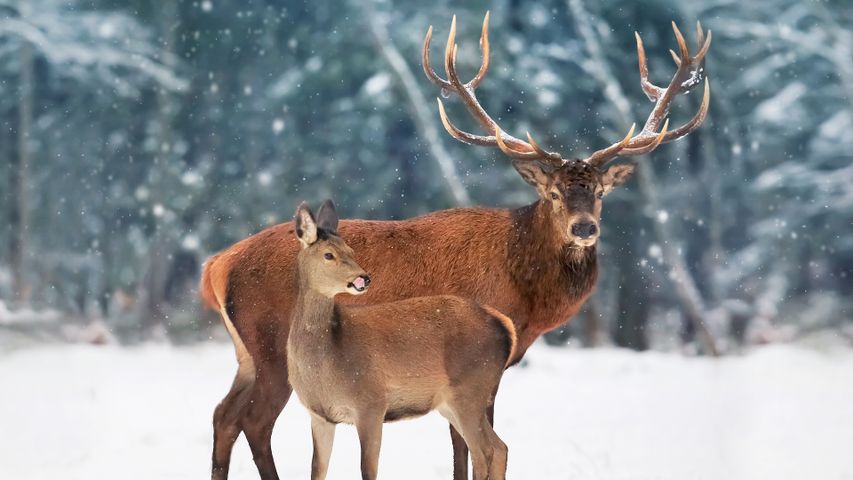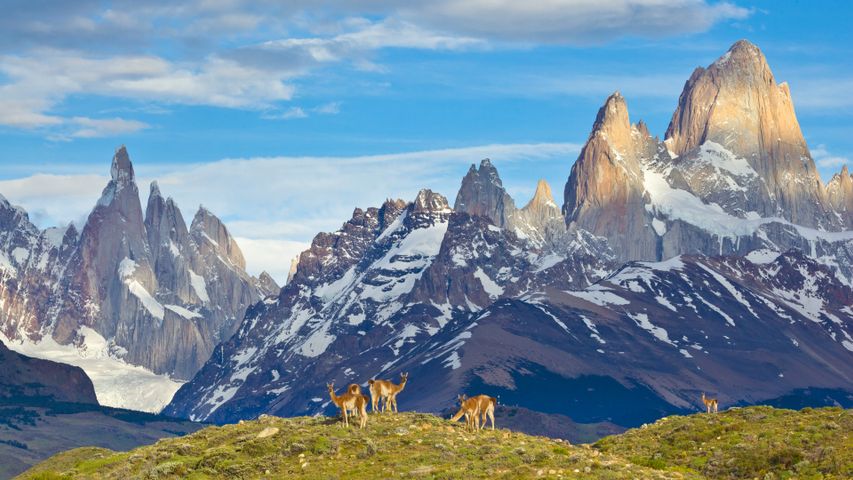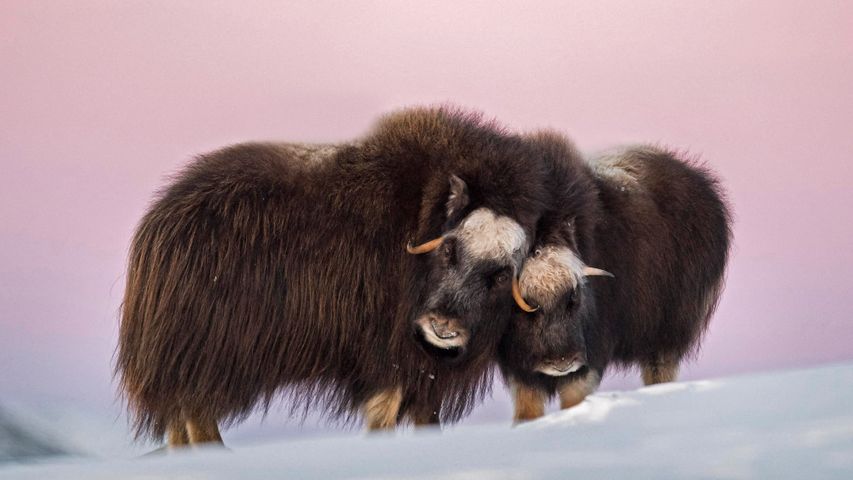Two guanacos, Torres del Paine National Park, Chile
© Floris van Breugel/NPL/Minden Picture
Attitude and altitude. Guanacos in Torres del Paine National Park, Chile
Prick up your ears and stretch your neck—let's step into the world of guanacos. These creatures, part of the same family as camels, alpacas and llamas, are native to the rugged landscapes of South America. Standing around 110 centimetres tall and weighing up to 90 kilograms, guanacos travel in herds led by a dominant male, accompanied by females and their young. After a gestation period of around 11 months, females give birth to a single baby—known as a chulengo—which is able to stand and walk within an hour of birth. Their diet, consisting of grasses, shrubs and lichens, enables them to flourish in harsh, mountainous terrain. Guanaco's soft, warm fur—first introduced for textile use in the mid-1900s—is highly prized. It is used to create luxury fabrics and is valued second only to vicuña wool across the Americas.
The guanacos seen in today's image roam freely in Torres del Paine National Park in Chile, a place where they thrive in the wild. Established as a national park in 1959, it covers over 1,800 square kilometres. Visitors to the park can also spot 15 species of birds of prey, along with mammals such as foxes, South Andean deer and pumas.
Related Images
Bing Today Images




 Yoho National Park, British Columbia
Yoho National Park, British Columbia
 View from the cupola of the International Space Station above the South Pacific Ocean
View from the cupola of the International Space Station above the South Pacific Ocean
 Whistler and Blackcomb mountains, British Columbia
Whistler and Blackcomb mountains, British Columbia
 Aurora borealis over Maligne Lake in Jasper National Park, Alberta, Canada
Aurora borealis over Maligne Lake in Jasper National Park, Alberta, Canada
 Polar bear cub, Churchill, Manitoba, Canada
Polar bear cub, Churchill, Manitoba, Canada
 Castle Stalker on Loch Laich, Argyll, Scotland
Castle Stalker on Loch Laich, Argyll, Scotland
 Sandstone hoodoos, Bryce Canyon National Park, Utah, United States
Sandstone hoodoos, Bryce Canyon National Park, Utah, United States
 Red deer, Canada
Red deer, Canada

